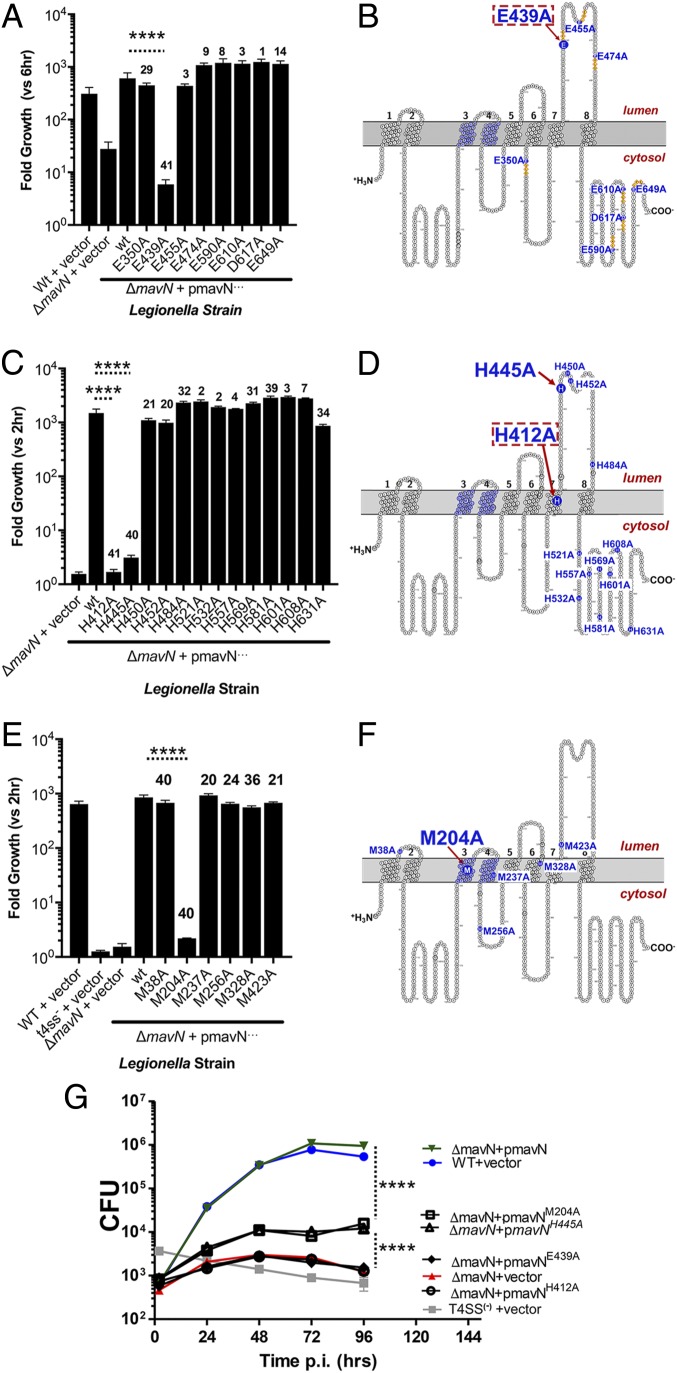Fig. 3.
Putative iron-coordinating residues are critical for MavN function during intracellular growth. (A, C, and E) BMDMs were challenged with the indicated strains of Legionella at an MOI of 0.01. At 72 hpi, intracellular bacterial growth was determined based on either measurement of bacterial luminescence (A) or enumeration of bacterial CFUs from infected cell lysates (C and E) and is plotted as the fold increase relative to either 6 hpi (A) or 2 hpi (C and E). The numbers above each bar represent the number of Legionella species for which the residue of interest is conserved [from a total of 41 species examined (8)]. (B, D, and F) Map position of each of the mutations analyzed in the graph directly to the left of each map. Large font: substitutions resulting in a defect in intracellular growth; red dashed boxes: substitutions showing no ability to support intracellular growth. (G) Substitution mutations can be separated into two classes based on magnitude of defects. BMDMs were challenged with the indicated L. pneumophila strains at an MOI of 0.01. At the indicated time points, cells were lysed and bacterial CFUs were enumerated (Materials and Methods). Data are from triplicate infections. For statistics, an unpaired, two-tailed Student’s t test was performed on logarithmically transformed data of mutants relative to the ΔmavN/pmavN+ strain in each panel. ****P < 0.0001. Data shown are means ± SE.

